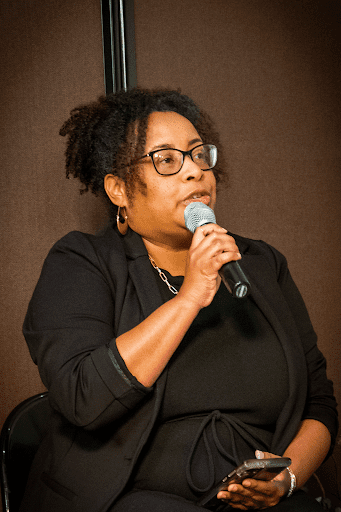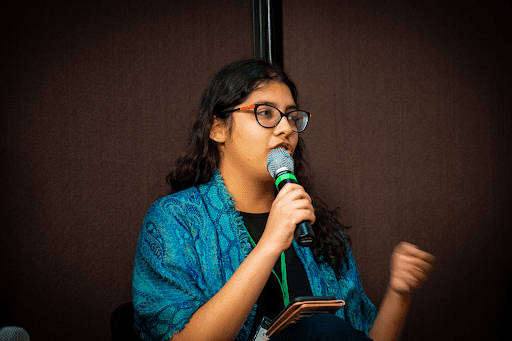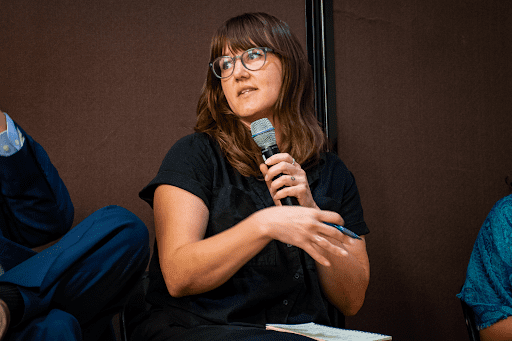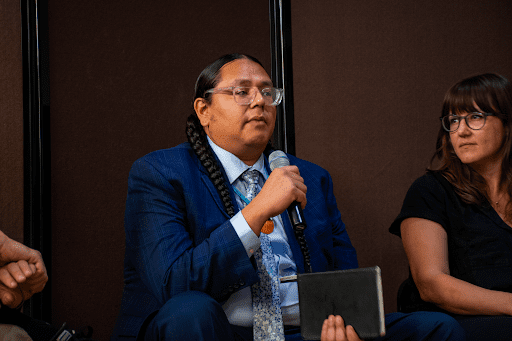Two years ago today, President Biden signed the Bipartisan Infrastructure Law, which has since announced nearly $400 billion in projects and awards. Paired with other economic packages — including the Inflation Reduction Act, CHIPs Act and American Rescue Plan — it’s part of the largest investment we’ve seen in communities in a generation. It also came with equity and climate justice goals.
Since the Infrastructure law was enacted, grassroots groups have been working to ensure the funds to state and local governments — for bridges, roads, and transit systems, broadband access, new pipes for clean drinking water, solarization and more — are getting to the communities who need it most.
Last week, Community Change hosted a panel moderated by Capital & Main’s Marcus Baram to learn more about the ways grassroots organizations across America have utilized these investments in their communities – and what the federal government needs to do to keep the momentum going.
Here are a few highlights:
A new era of investment connects urban and rural communities

Jennifer Wells, economic justice director at Community Change, grounded the conversation by sharing her experience of being displaced from her home as a little girl when Hurricane Katrina hit. Moving to rural West Virginia showed her that “these rural, mostly-white communities were facing similar challenges as my urban, mostly-Black community. While we know Black and brown communities are hit first and worst, the thing that connected everyone was decades of disinvestment.”
But, Wells noted, thanks to recent federal investment in infrastructure that includes tactics to mitigate climate change and create jobs, we have an unprecedented opportunity to come together for a different purpose — to invest in our states, cities, towns, and our people.
Making homes in the district safer and more efficient
Sidra Siddiqui, an organizer with the Washington Interfaith Network (WIN) DC, shared about the pilot projects her organization led to improve infrastructure in predominantly Black and brown D.C. neighborhoods. One of these pilot programs trained “citizen scientists” to conduct tests for dangerous levels of nitrogen dioxide in their homes. The group is also pushing the D.C. City Council to consider funding the conversion of 30,000 homes from gas to electric energy as well as increasing weatherization and insulation.

WIN DC additionally invited City Council member Charles Allen to a public housing building to see for himself the mold, roaches, and overbearing heat residents were experiencing, which pushed him to introduce his Healthy Homes Act. Sharing the stories of directly-impacted people transformed collective power into policy and showing just how crucial community voices are to making change.
Creating good, green jobs in L.A.
The Los Angeles Alliance for a New Economy (LAANE) has been working to secure funding for projects that will bring renewable energy to public spaces like schools and parks. Climate Campaign Co-Director Lauren Ahkiam shared a significant funding win that came in the form of debt relief for residents who were unable to make utility payments during and after the pandemic. The city used funds to forgive debts for water and energy bills, demonstrating government support for treating access to water and energy as a human right.
LAANE was also able to negotiate workforce agreements and expanded apprenticeship and workforce development programs that have been successful in placing people of color, women, and people returning home from incarceration in good-paying jobs. Investing in the community is paying dividends in Los Angeles by strengthening its economy while taking care of its people.

Fighting for broadband access in the Blackfeet Nation
Montana advocate Patrick Yawakie-Peltier, co-CEO of Red Medicine LLC, shared an experience that proves not all funding will be spent equitably on its own and demonstrates why grassroots voices are so important in policy implementation. Yawakie-Peltier, who represents the interests of tribal communities in Montana, detailed the difficulties of getting the government to invest in quality broadband access on tribal land and prioritize Native communities over corporations.
“Money doesn’t necessarily get to the tribe and is being funneled to outside corporations who are coming into the state trying to develop internet — and we see that as highly problematic. Outside corporations are coming in and getting awarded these grants where they should be rightfully going to the tribe if they own a service provider,” he said.
Yawakie-Peltier reminded folks that our communities know best how to invest federal funding and should have a seat at the table in determining how it is allocated.

As we reflect on two years of the Bipartisan Infrastructure Law, we can celebrate all of the community-led initiatives that have improved infrastructure nationwide while holding space for the work still left to do. Impacted people and their collective power play a vital role in informing policy and ensuring government leaders are building relationships with the communities they serve is essential.
As Wells put it, “We have the power to write ourselves into the story and we’re in this fight for the long haul.”